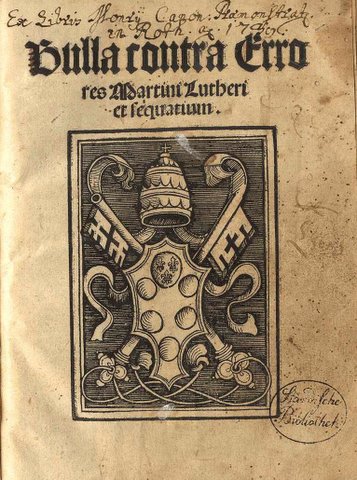The Ehrman Project Blog addresses a question I've often wondered about; whether or not historical Christian documents are evaluated by the same standards of writings from other religions. The Ehrman Project is an evangelical site dedicated to providing answers- not to general critisms of New Testament reliability- but rather to Bart Ehrman's critique of New Testament scriptures. The site doesn't target Ehrman himself but is a response to be a media personality cult built around him. An inquirer poses this question:
"... Irish legends dating back to the middle ages tell of magical and powerful races that inhabited Ireland before the arrival of the Gaels. Scholars consider this to be how that culture "remembered" historical waves of migration on the island. Also stories of Mesopotamian gods and patriarchs (such as Cain and Abel) record the rivalry between the farmer and the herder. In other words it seems to be generally accepted that the mythological stories so important to ancient cultures have some basis in historical fact, thought the details may be lost.
The exception seems to be New Testament scholarship. Stories such as the Magi, the census in Luke, and the resurrection are seen as simple fabrications... The assumption seems to be that the Gospels have cobbled together a series of fabrications, unless of course the exact details are found in other (preferably) non-Christian sources... Are early Christian writings really evaluated by a different standard than writings from other cultures and other religions?
The Ehrman Project objects to the inquirer's implication that New Testament accounts are "on the same level" as cultural legends, this is, merely embellishments layered over kernels of truth. I honestly do not see how the people at the Ehrman Project drew that conclusion. The inquirer is simply drawing a contrast between two widely different forms of literature and how they are treated. The entire first section of the response preaches to the choir, trying to convince the inquirer of something he is already convinced of- that the New Testament is fundamentally different in nature from cultural legends. (Paul, too, insists that the core events of the Christian message—the death, burial, resurrection, and reappearance of Jesus of Nazareth—are not only significant; they are also verifiably true.) But the Ehrman Project continues with a response that should be very interesting to believers who intend to enter academia and those who casually read best sellers by pop-experts:
Many New Testament scholars do indeed seem to have a bias against New Testament “history” as being unworthy of that name. They seem to hold the New Testament documents to a different standard of reliability than they hold classical documents to. F.F. Bruce, professor of New Testament at the University of Manchester in England... did see a bias in the evaluation of the New Testament documents in Religion Departments at universities that he did not see in Classics or History Departments. By the standards employed in the latter departments, the New Testament documents come off looking much stronger in their claims to historical reliability than the accepted documents of ancient Greek and Roman history, and yet no one disputes the basic trustworthiness of these sources for conveying the gist of what happened.
"... Irish legends dating back to the middle ages tell of magical and powerful races that inhabited Ireland before the arrival of the Gaels. Scholars consider this to be how that culture "remembered" historical waves of migration on the island. Also stories of Mesopotamian gods and patriarchs (such as Cain and Abel) record the rivalry between the farmer and the herder. In other words it seems to be generally accepted that the mythological stories so important to ancient cultures have some basis in historical fact, thought the details may be lost.
The exception seems to be New Testament scholarship. Stories such as the Magi, the census in Luke, and the resurrection are seen as simple fabrications... The assumption seems to be that the Gospels have cobbled together a series of fabrications, unless of course the exact details are found in other (preferably) non-Christian sources... Are early Christian writings really evaluated by a different standard than writings from other cultures and other religions?
The Ehrman Project objects to the inquirer's implication that New Testament accounts are "on the same level" as cultural legends, this is, merely embellishments layered over kernels of truth. I honestly do not see how the people at the Ehrman Project drew that conclusion. The inquirer is simply drawing a contrast between two widely different forms of literature and how they are treated. The entire first section of the response preaches to the choir, trying to convince the inquirer of something he is already convinced of- that the New Testament is fundamentally different in nature from cultural legends. (Paul, too, insists that the core events of the Christian message—the death, burial, resurrection, and reappearance of Jesus of Nazareth—are not only significant; they are also verifiably true.) But the Ehrman Project continues with a response that should be very interesting to believers who intend to enter academia and those who casually read best sellers by pop-experts:
Many New Testament scholars do indeed seem to have a bias against New Testament “history” as being unworthy of that name. They seem to hold the New Testament documents to a different standard of reliability than they hold classical documents to. F.F. Bruce, professor of New Testament at the University of Manchester in England... did see a bias in the evaluation of the New Testament documents in Religion Departments at universities that he did not see in Classics or History Departments. By the standards employed in the latter departments, the New Testament documents come off looking much stronger in their claims to historical reliability than the accepted documents of ancient Greek and Roman history, and yet no one disputes the basic trustworthiness of these sources for conveying the gist of what happened.
Full post can be read here



















